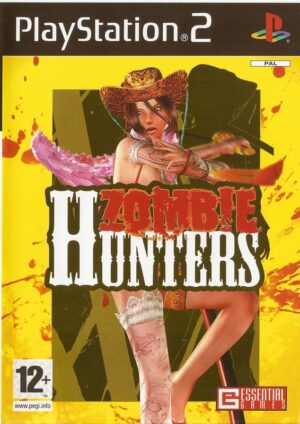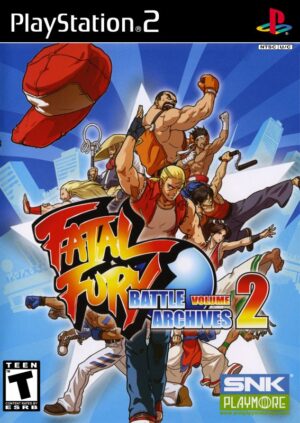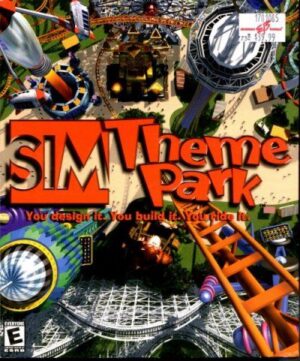Retro Replay Review
Gameplay
The King of Fighters: Orochi-Hen compilation brings together the core mechanics of three landmark entries—The King of Fighters ’95, ’96, and ’97—into a singular package. Players step into the classic 3-on-3 team battles that defined the series, complete with power gauges that build as you attack or take damage. The compilation preserves each game’s unique feel: ’95’s straightforward offense-driven system, ’96’s refined hit combos and guard cancel options, and ’97’s introduction of MAX Mode for devastating super attacks.
Each installment in the Orochi saga offers subtle variations in pace and strategy. In ’95, you’ll appreciate the raw simplicity of charging your Power Gauge to unleash Super Special Moves without additional frills. Moving on to ’96, the game tightens up move reliability and expands corner pressure tactics, while ’97 rewards precise timing with explosive MAX mode finishers that can turn the tide of a match in an instant. This evolutionary approach keeps long-time fans engaged and newcomers curious about each chapter’s innovations.
Controls remain crisp and responsive, faithfully emulating the original arcade ethos. Whether you’re executing a perfectly timed roll or cancelling into a super, inputs register with minimal latency—though occasional slowdown during explosive super sequences is possible on certain hardware. The compilation also includes adjustable difficulty settings and the ability to tweak button layouts, making it accessible to players of varying skill levels. In short, Orochi-Hen serves up three decades-old classics with their core gameplay intact and ready for both casual and competitive play.
Graphics
Visually, Orochi-Hen is a time capsule of 1990s sprite-based artistry. Character sprites in ’95 are bold and iconic, with limited animation frames that nonetheless convey the raw energy of each fighter. By ’96, sprite work becomes smoother, with more fluid walk cycles and attack animations. The culmination arrives in ’97, where frames-per-second remain consistent and boss characters like Orochi himself erupt onto the screen with dramatic flourishes.
Backgrounds across the three games showcase a variety of locales—urban rooftops, ominous shrines, neon-lit alleyways—each rendered in rich 2D detail. While some stages may look dated next to modern titles, there’s undeniable charm in the pixel art and parallax scrolling that recalls the heyday of arcade fighting. Colors remain vibrant, and character portraits during the versus screen retain expressive flair, though resolution scaling can introduce minor blurring unless you play on retro-styled CRT filters.
The compilation’s presentation menus and portrait galleries offer a slick wrapper around the original visuals. Loading times between matches are kept short, and you can view concept artwork or listen to classic tracks via an in-game jukebox. Though there are no high-definition remasters of the sprites, the faithful reproduction preserves that nostalgic sheen for fans who grew up in arcades—and provides a window into the era’s aesthetic for newcomers.
Story
At its heart, Orochi-Hen chronicles the epic Orochi saga—a supernatural tournament spanning three consecutive King of Fighters events. In ’95, the seeds of conflict are planted as the enigmatic Orochi begins to stir, drawing powerful combatants under its influence. Iori Yagami’s tortured vendetta against Kyo Kusanagi introduces a darker tone, hinting at ancient clan rivalries and hidden powers.
The narrative deepens in ’96 with the formation of new teams and the revelation of Orochi’s resurrection plot. Between fights, brief cutscenes and ending movies illustrate each team’s personal stakes, from the heroic Hero Team to the tragic Orochi Team. This installment enriches character backstories, giving weight to climactic battles and fueling the sense that something far greater than tournament glory is at stake.
By the time you reach ’97, the story reaches its crescendo: Orochi emerges in full power, seeking to reshape the world. Boss encounters against possessed fighters and the final showdown with Orochi himself deliver memorable cinematic moments, complete with the haunting “Third Eye” motif. While the in-game narrative is concise by modern standards, the compilation’s structure allows you to experience the whole saga in chronological order, making it easier than ever to follow the dramatic through-line of betrayal, redemption, and ancient myth.
Overall Experience
The King of Fighters: Orochi-Hen is a treasure trove for both series veterans and curious newcomers. Packaging three seminal titles into one release offers hours of varied content, from the raw intensity of ’95 to the polished finality of ’97. The compilation’s user-friendly interface, complete with save states and difficulty options, ensures accessibility without diluting the original arcade challenge.
While the games naturally show their age—particularly in sprite resolution and the absence of modern online rollback netcode—the core fighting experience remains as engaging today as it was in arcades. Fans of team-based combat will appreciate the diversity of rosters, each game adding new characters and movesets that expand tactical possibilities. The soundtrack, loaded with adrenaline-pumping rock and electronic tracks, further elevates the atmosphere.
Ultimately, Orochi-Hen stands as a definitive collection of the Orochi saga, offering both a historical journey through The King of Fighters’ golden age and a robust fighting package in its own right. For anyone looking to explore one of the genre’s most enduring story arcs or simply to test their mettle in classic 2D combat, this compilation delivers a satisfying, nostalgia-infused experience.
 Retro Replay Retro Replay gaming reviews, news, emulation, geek stuff and more!
Retro Replay Retro Replay gaming reviews, news, emulation, geek stuff and more!




Reviews
There are no reviews yet.